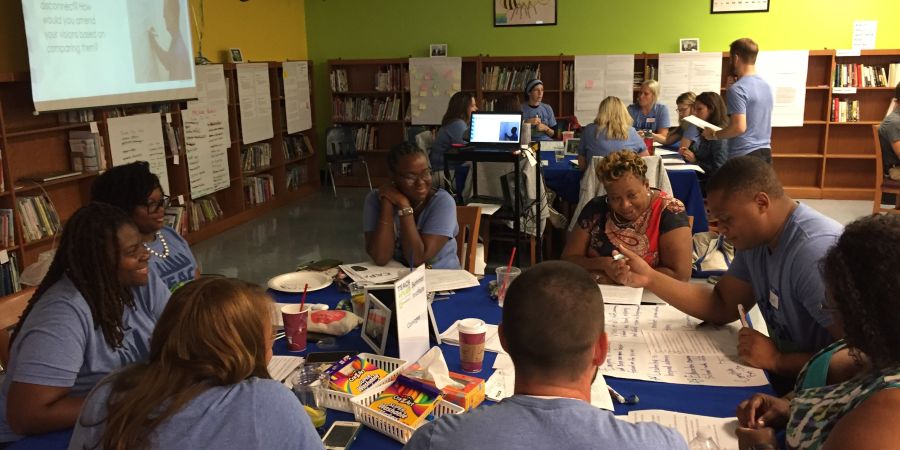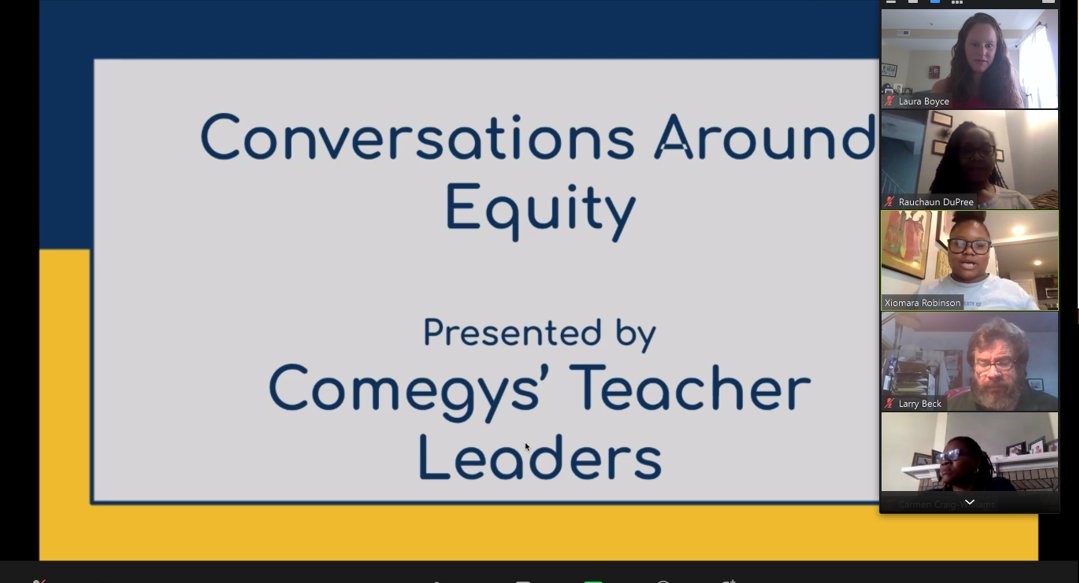Blog

For School-Supporting Organizations, What Does Equity Look Like?
With the global pandemic, economic crisis, Black Lives Matter demonstrations, and a pivotal presidential election, we have experienced an enormous amount of change in the last several months. These events have placed a magnifying glass on the racial inequities Black, Indigenous, and people of color (BIPOC) face in all sectors of America, particularly in our schools. These inequities are not new nor even a surprise to many. For instance, here in Pennsylvania, a study shows that current school funding perpetuates structural racism. Despite recent increases in state investments in K-12 education and the adoption of a funding formula that distributes funds in a fairer fashion, school districts that serve more Black and Brown students continue to receive less state funding than their fair share, while districts with greater white populations receive more.
While much progress still needs to be made, school-supporting organizations are identifying ways to work towards a more just and inclusive educational experience for every child. This is taking shape through efforts to diversify the educational workforce, ensure families have technology and internet access, and build educators’ understanding of equity. A sustained, coordinated statewide advocacy campaign is working to fix inequities in Pennsylvania’s school funding method. Yet with the need for so many changes, the process of ensuring students receive a culturally responsive education can be overwhelming.
Examples from the field
Scholars find that true culturally competent teaching is an important method to reduce achievement gaps and promote positive ethnic-racial identities for students of color (Dickson et al., 2015; Sleeter, 2012). I want to highlight two organizations whose focus on equity – across races, cultures, and identities – has for several years been successfully ingrained in their work and is evident in every policy, practice, and decision. These organizations do not see equity as a standalone initiative nor a looming challenge, but as entirely central to their mission to uplift and empower not only students, but families, educators, and districts.
Teach Plus works closely with teachers to develop their coaching and leadership skills so they are prepared to support their peers at their school. William Penn Foundation has supported Teach Plus since 2016 to work with five Philadelphia District schools – and more recently with Independence Mission Schools as well – to develop teacher leadership and literacy practices.
Teach Plus structures its programming for teachers with equity at the center. At the organization’s Summer Institute for Philly teachers this year, teachers learned how to review student achievement data with an equity lens. They participated in a session on facilitating conversations about race to help them be prepared to lead discussions with colleagues. Teachers also received guidance on how to conduct an equity audit in their classrooms. Equity audits allow educators to assess their instructional practices and identify opportunities to implement a more culturally responsive approach.

T3 teacher leaders at Comegys Elementary School launched a series on race and equity at their school inspired by conversations begun at Teach Plus' T3 Summer Institute.
Like Teach Plus, Partners in School Innovation's mission and vision are grounded in equity. This national organization works across the country, including in Philadelphia, with district leaders and school-based leadership teams to transform teaching and learning using equitable strategies. The Foundation supports Partners to work in three elementary schools in North Philadelphia. Gates Foundation is supporting Partners to work in additional schools, focusing on middle school math.
Partners uses a research-based rubric to support schools to build more equitable systems and incorporate more culturally responsive practices in classrooms. Their School Transformation Rubric helps schools create equity goals and holds them accountable to their yearly plans. Partners also supports school leaders and teachers in analyzing data with an equity lens, ensuring that there is a clear understanding of all students' successes and potential needs. Partners provides direct coaching and professional learning opportunities focused on culturally responsive teaching. They also host book clubs for teachers, where they can come together to have conversations on racial equity.
These organizations have demonstrated the strength of their approach in Philadelphia. The schools that were supported by Teach Plus saw K-2 student reading proficiency increase by 11 percentage points and independent reading levels increase by 12 percentage points, based on the AIMSweb assessment, a widely used and comprehensive measure of student growth. Two of the schools receiving direct support from Partners improved their literacy outcomes on the District academic scorecard, moving from ‘below growth standard’ to ‘meeting’ or ‘exceeding’ growth expectations.
Looking forward
There are other organizations that we can learn from who are ensuring our schools in Philadelphia are more equitable, including The Center for Black Educator Development and the WW Foundation. The Center for Black Educator Development works to diversify the teacher workforce, and WW Foundation recruits diverse individuals with a background in STEM to teach in high-need schools.
It’s important to remember that equitable policies and practices benefit the whole school community. The children in our schools today are not the same as those whom the public education system was originally designed to serve. Our schools are becoming more and more diverse. According to Census Bureau projections, racial and ethnic minorities are expected to make up more than half of the total U.S. population in coming decades. Currently, they make up about 40% of the overall population, with the share projected to increase to 56% by 2060. Schools and teachers with strong culturally responsive practices are better positioned to serve every student.
Our society is in the process of a course correct to create truly equitable systems, requiring everyone working to improve education to see and respond to every student’s unique circumstances and provide what they need to achieve success.
Subscribe To Our Blog
Subscribe to our updates and always be in the know!
